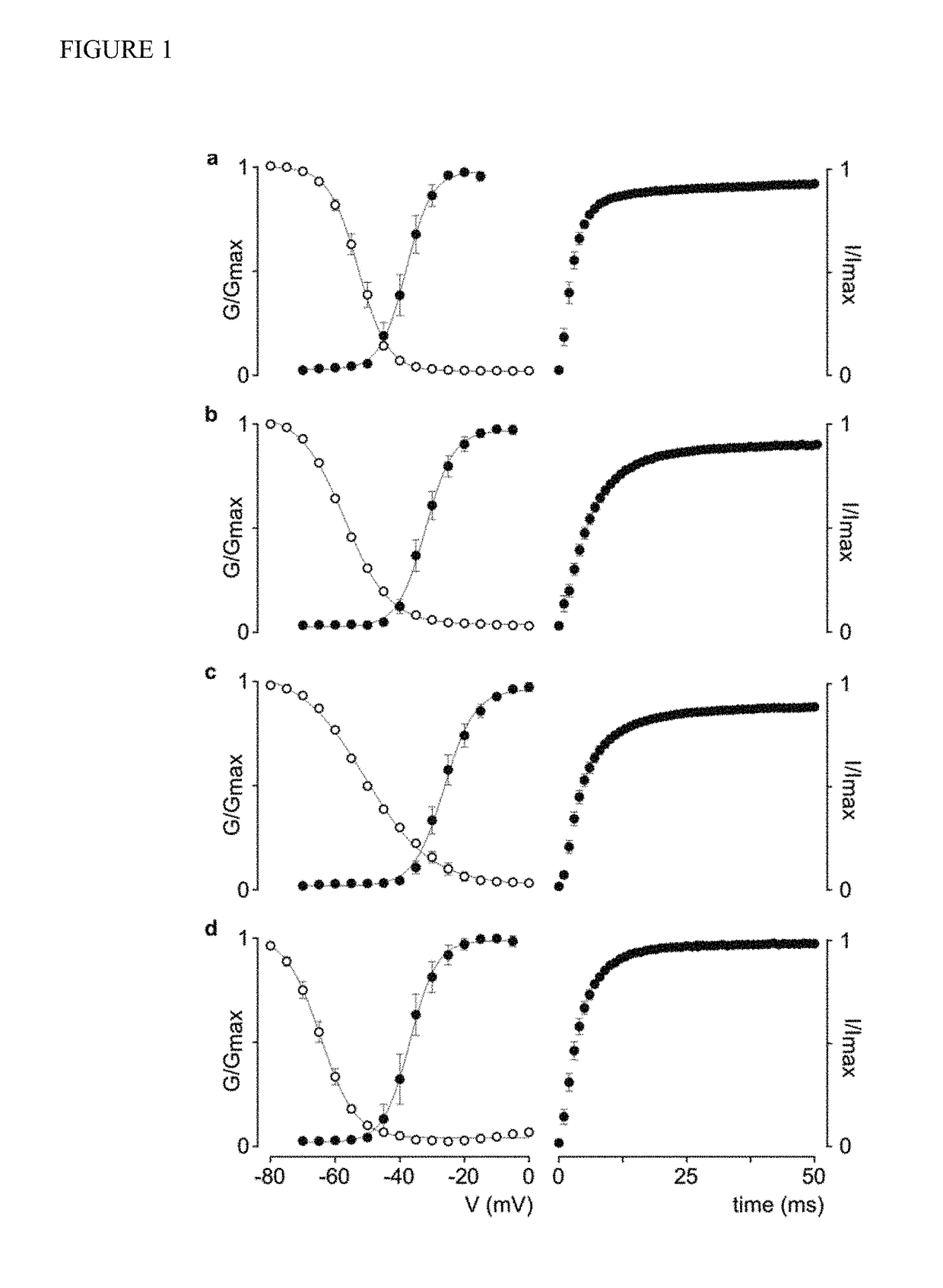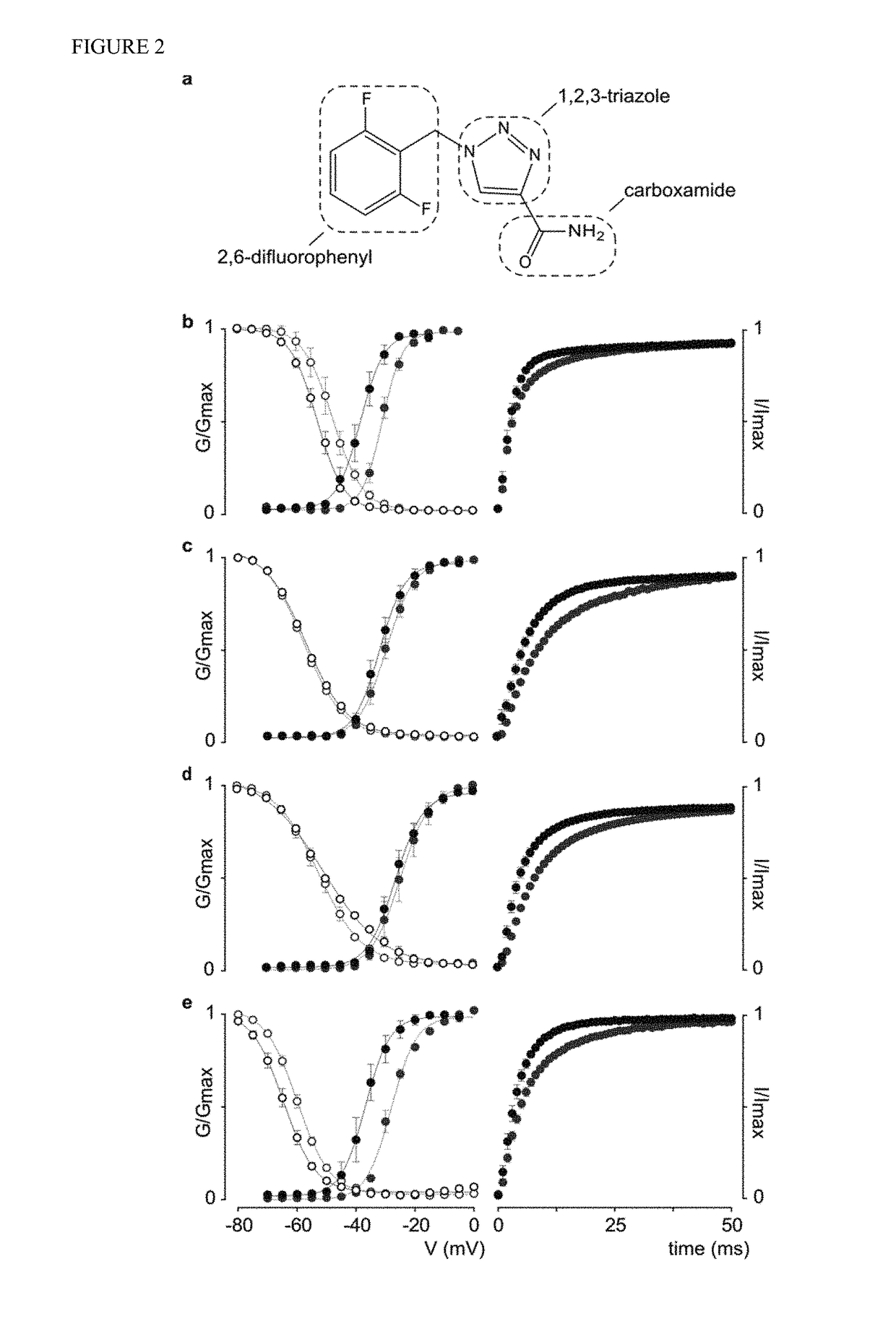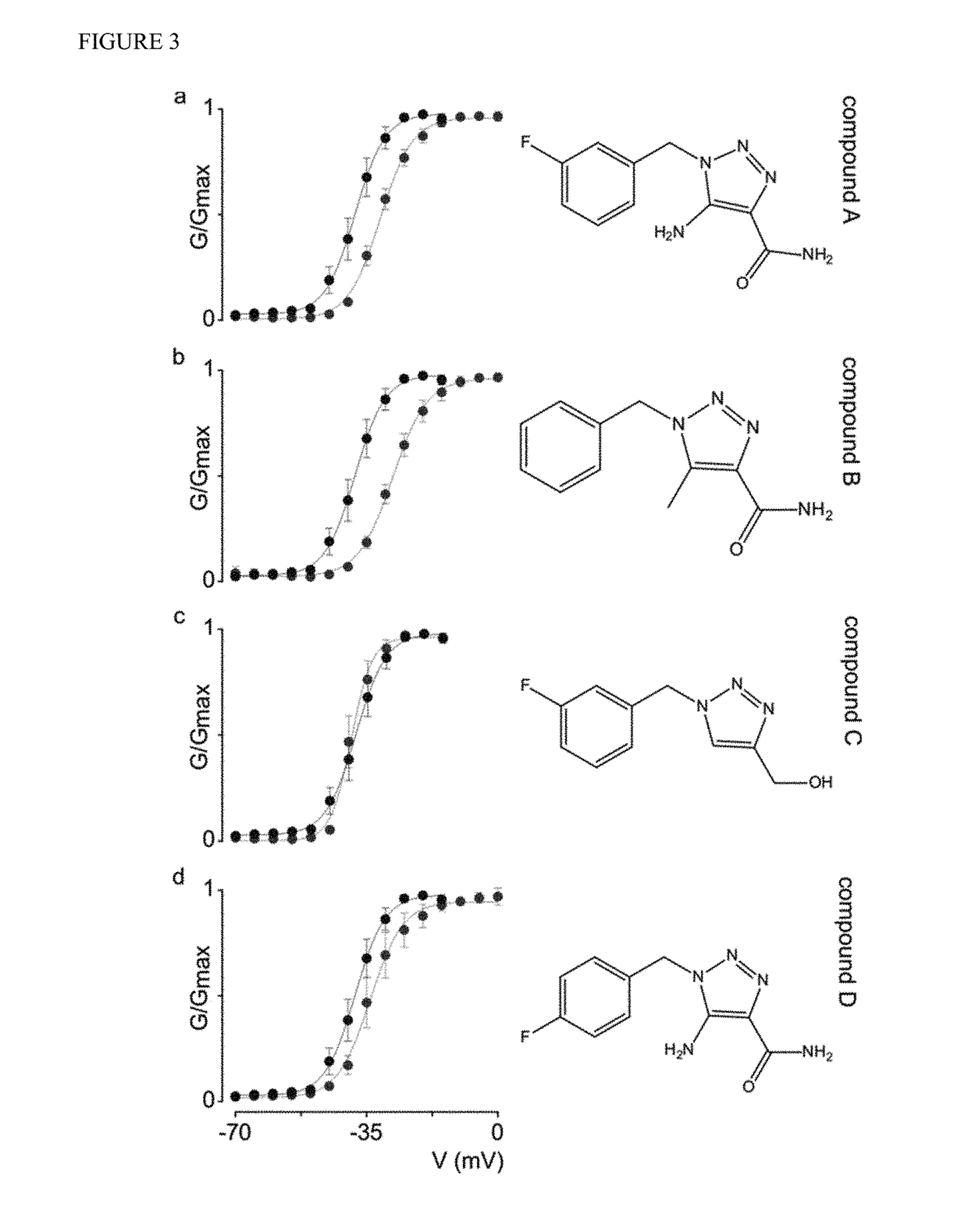Derivatives of rufinamide and their use in inhibtion of the activation of human voltage-gated sodium channels
a technology of rufinamide and sodium channel, which is applied in the direction of nervous disorder, organic chemistry, drug composition, etc., can solve the problems of varying degrees of learning disabilities of lgs patients, affecting their social integration, and difficult diagnosis and management of lgs patients
- Summary
- Abstract
- Description
- Claims
- Application Information
AI Technical Summary
Benefits of technology
Problems solved by technology
Method used
Image
Examples
example 1
[0133]Expressing human Nav channel isoforms in Xenopus oocytes. To identify the molecular target of rufinamide in humans, we wanted to examine potential drug-induced alterations of human Nav channel opening and closing (i.e. gating). Although stable cell lines of human (h)Nav1.1, hNav1.2, hNav1.3, and hNav1.6 have been reported. DNA re-arrangement events and low protein levels have hampered in-depth experiments with these genes in Xenopus oocytes, a robust heterologous expression system widely used to address fundamental questions on the gating mechanisms and pharmacological sensitivities of ion channels. By combining DNA transformations into low-copy E. Coli variants (CopyCutter EPI400™) with careful full-length clone sequencing, we were able to consistently obtain ionic currents for all four human Nav channel isoforms in Xenopus oocytes (FIG. 1). Examination of the G-V relationships for hNav1.1, hNav1.2, hNav1.3, and hNav1.6 (FIG. 1) reveals that the midpoints (V1 / 2) for channel a...
example 2
[0136]The gating process of human Nav channels is altered by rufinamide. Rufinamide, or 1-[(2,6-difluorophenyl)methyl]-1H-1,2,3-Triazole-4-carboxamide, is slightly soluble in water but dissolves readily in DMSO at concentrations up to 9 mg / ml (FIG. 2a). As such, patients are given the drug either as a tablet formulation (Banzel®) or an oral suspension (Inovelon®), preferably to be taken with food. Based on these properties, we dissolved rufinamide in DMSO and diluted this stock solution with appropriate recording media to a final concentration of 100 μM, thereby approximating clinically observed serum quantities. As a result of this preparation, Nav channel-expressing oocytes were exposed to 100 μM rufinamide in a solution containing less than 1% DMSO. Control experiments without the drug revealed that the gating properties of hNav1.1, hNav1.2, and hNav1.3 are not affected when exposed to 1% DMSO (FIG. 4, Table 1). However, the G-V relationship of hNav1.6 is shifted to more depolari...
example 3
[0138]Molecular modifications of rufinamide enhance hNav1.1 efficacy. The triazole-derived molecular organization of rufinamide is distinct among anti-epileptic compounds. To examine which features of the N-benzyl triazole core are important for its inhibitory action on hNav1.1, four structurally related compounds with unknown functionality were selected and a structure-activity relationship (SAR) study was performed using 1-[(3-fluorophenyl)methyl]-1H-1,2,3-Triazole-4-carboxamide-5-amine (Compound A); 1-[phenyl-methyl]-1H-1,2,3-Triazole-4-carboxamide-5-methyl (Compound B); 1-[(3-fluorophenyl)methyl]-1H-1,2,3-Triazole-4-hydroxymethyl (Compound C); and 1-[(4-fluorophenyl)methyl]-1H-1,2,3-Triazole-4-carboxamide-5-amine (Compound D). As a result, we found that Compound A and B inhibit hNav1.1 opening (FIG. 3; Table 1), with Compound B producing the largest depolarizing shift in channel activation voltage (˜+11 mV). Strikingly, neither of these compounds influences hNav1.1 steady-state ...
PUM
| Property | Measurement | Unit |
|---|---|---|
| conductance-voltage | aaaaa | aaaaa |
| conductance-voltage | aaaaa | aaaaa |
| conductance-voltage | aaaaa | aaaaa |
Abstract
Description
Claims
Application Information
 Login to View More
Login to View More - R&D
- Intellectual Property
- Life Sciences
- Materials
- Tech Scout
- Unparalleled Data Quality
- Higher Quality Content
- 60% Fewer Hallucinations
Browse by: Latest US Patents, China's latest patents, Technical Efficacy Thesaurus, Application Domain, Technology Topic, Popular Technical Reports.
© 2025 PatSnap. All rights reserved.Legal|Privacy policy|Modern Slavery Act Transparency Statement|Sitemap|About US| Contact US: help@patsnap.com



